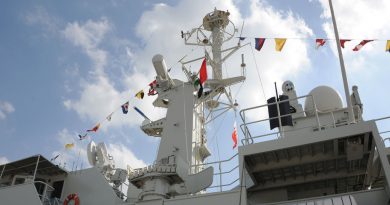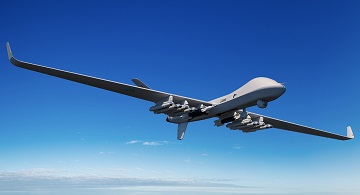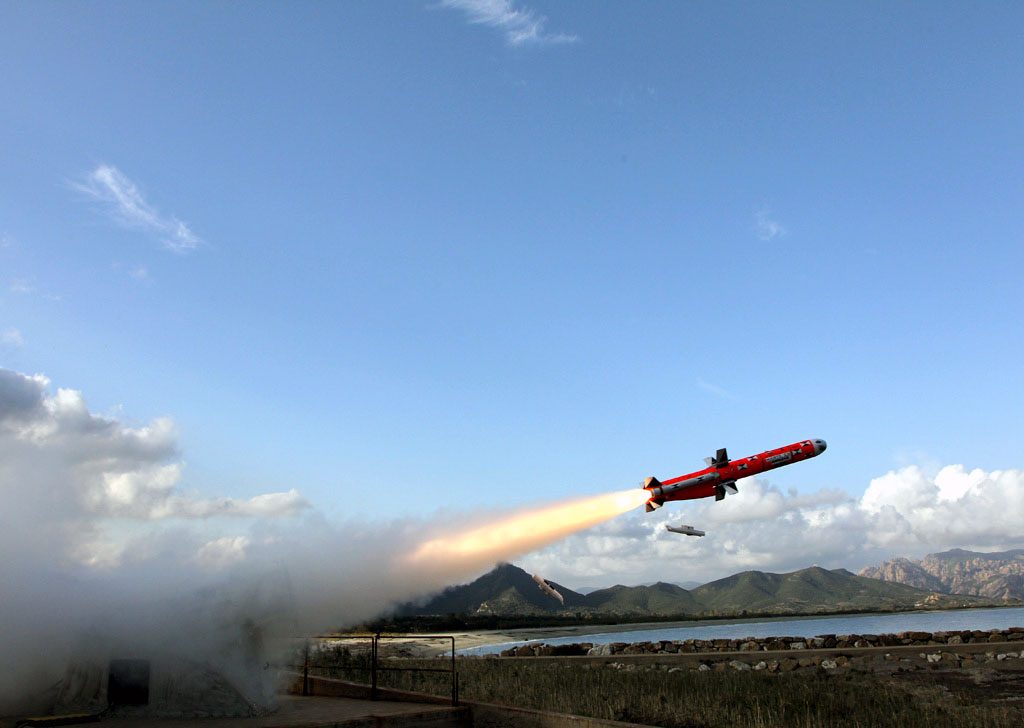
NAVDEX 2019: MBDA unveils Marte ER family’s latest developments
After the successful first test flight of one of the naval/ground version prototype Marte ER, during the NAVDEX 2019, MBDA unveiled more details and a video about the missile and testing, as well as the different family’s version developments.
‘The firing trail was conceived to validate the aerodynamic, propulsion, guidance and navigation control chain of the munition’, highlighted Marco Gelli, MBDA’s Head of Italian anti-ship new business, adding that the later ‘was inert and without homing guidance system’, but equipped with telemetric equipment. The munition was launched ‘from a pre-series canister’ and flew for ‘several minutes and a distance of over 100 km’, conducting ‘several turns and sea skimming’ altitude flight.
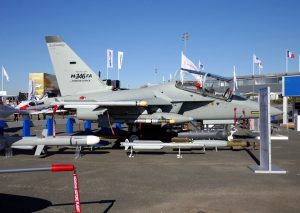
The video showed the missile canister was installed at ashore coastal test facility and conducted a flight over the test-range area at sea, according to the planned mission to achieve the intended missile range through several waypoints and sea-skimming flight to validate new flight control, propulsion and navigation system performances.
Conceived and developed as a multi-platform intermediate-range anti-surface weapon system capable to be launched from naval platform and coastal battery, rotary-wing and fixed wing platforms, including both combat fast jet such as the Eurofighter Typhoon and advanced training/attack platforms, the Marte ER features a 3.6 length constant 316 mm diameter airframe with a new propulsion package based on a Williams International WJ-24-8G turbojet and new fuel system with a single ventral intake allowing the missile to achieve a range of beyond 100 km.
Equipped with rear flight control (instead of central as for the Marte Mk2 family), the Marte ER also features a 70+ kg warhead and an enhanced navigation and guidance system based on an integrated IMU/GPS system for more accurate flight and precision strike on geographic coordinates as well as a new mission planning system allowing to conduct up to 10 tridimensional waypoints. No details have been provided on the weapon seeker, but EDR On-Line understood it will be equipped with a new generation active RF seeker with advanced ECCMs capabilities.
‘The Marte ER development and qualification programme is progressing according to schedule’, said MBDA representative, without providing further detail about the naval/ground launched missile version development and qualification schedule and firings. In 2016, Qatar Emiri Naval Forces became the launch customer of the munition version for the coastal battery application, which deliveries are planned in 2021.
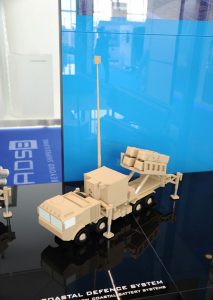
With a weight of around 300kg (340kg including boosters) as for the earlier Mk2/S, the Marte ER is being developed in two versions and one variant. Both the naval/ground (N/G) and helicopter-launched (H/C) versions employs boosters and foldable central wings while the latter model differs for mechanical interface and connectors with the aerial platform. As the first Marte ER customer, the Qatar Emiri Naval Forces will use the N/G version as part of the Multi-layer Coastal Defence System, where each Marte battery on the latter package will include three launcher units, one command and control and one surveillance unit. During the NAVDEX 2019, MBDA unveiled the latest version of missile launching unit with fixed instead of rotating complex on high-mobility MAN vehicles. The second version to be delivered is the helicopter-launched for the Qatar Emiri Air Force, which will equip the Leonardo-provided NHIndustries NFH90 naval customized helicopters. The Leonardo-managed procurement program includes both transport and naval versions helicopters, which deliveries are planned from 2022.
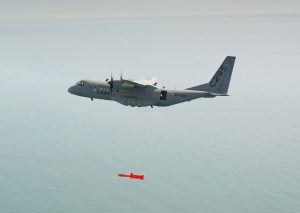
During NAVDEX 2019 MBDA unveiled that the Group is participating to bids for deploying the Marte ER from maritime patrol aircraft, as already successfully demonstrated for the Mk2/S in the past with release trials from the Airbus C-295. The Marte ER integration will be achieved with large re-use of H/C model avionics software package (mission preparation and HCI).
At the same time, MBDA is jointly working together with Leonardo (as programme leader) for the fast-jet (F/J) variant integration. The latter variant differs from the N/G and H/C version for the boosters’ absence, fixed central wings, different safety and arming unit and launching flight envelope. The Marte ER has been officially requested as a weapon of choice to fulfill an anti-ship capability from Eurofighter Typhoon. A contract with Kuwait Air Force customer is still to be awarded to MBDA but expected very soon, with aircraft already under construction for delivery from 2020 to 2023. MBDA and Leonardo, however have been looking to other platform with joint studies carried out to assess Marte ER installation on board the Leonardo M-346 LFFA (Light Fighter Family of Aircraft). To be carried on MIL-STD-1760 aircraft pylons (external underwing pylons for a total of two missile per aircraft), MBDA and Leonardo have successfully conducted ground installation trials as shown by images of missile upper airframe section attached to one pylon. MBDA is also looking to other latest generation aircraft and unveiled during NAVDEX 2019, that internal activities have been on-going to better understand, based on open source information, the integration of the Marte ER F/J variant on the Lockheed Martin F-35 Lightning II stealth fighter: preliminary studies do not ban the missile to be fitted on the F-35 wing pylons, while bay installation requires further investigation.

